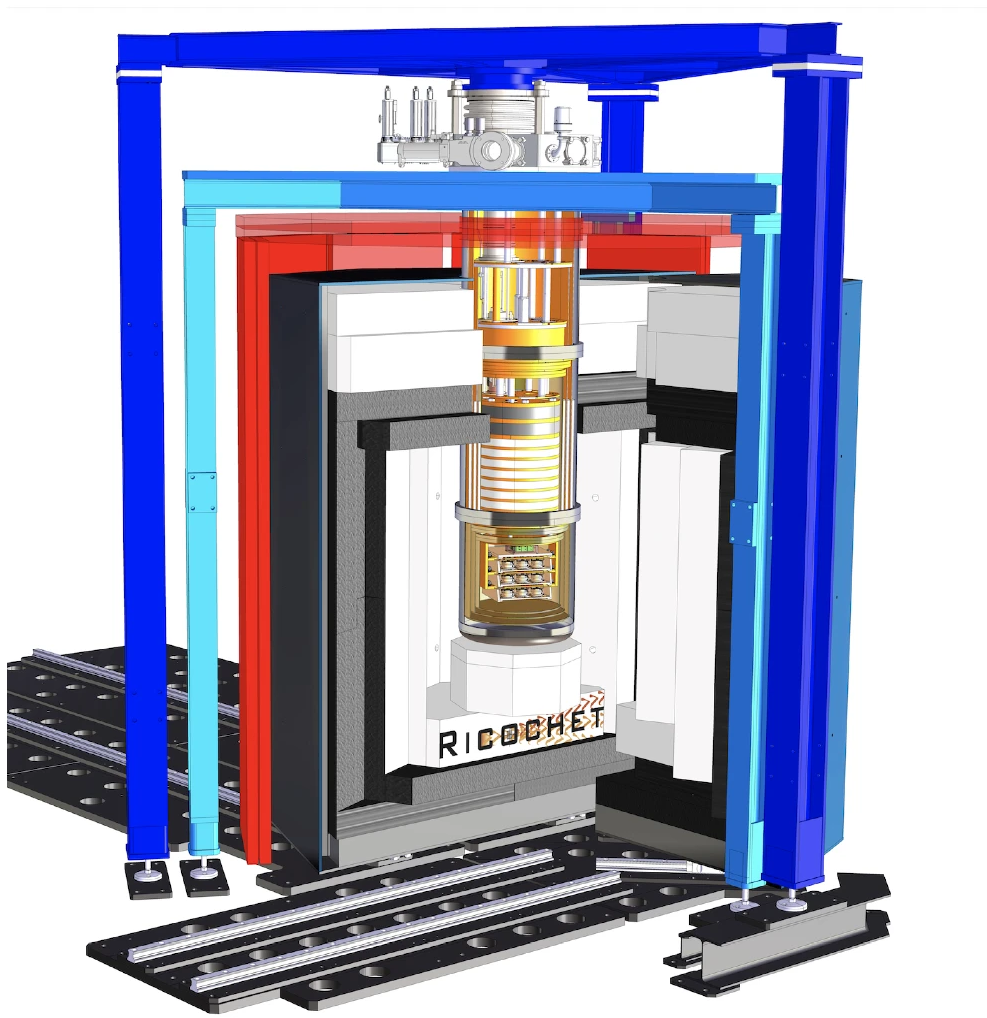Ricochet
Search for the Coherent Elastic Nuclear Scattering of Neutrinos from a reactor
Ricochet (LPSC/ILL) - Coherent elastic nuclear scattering of neutrinos
A neutrino is a fermion that interacts only via the weak interaction and gravity. It is electrically neutral and its rest mass is extremely small. Neutrinos typically pass through normal matter unimpeded and undetected and thus are not easy to study. One of its rare interactions with matter is the Coherent Elastic Neutrino Nuclear Scattering (CEνNS) - pronounced “sevens” - a low energy process (< 50 MeV) where a neutrino smacks a nucleus via exchange of a Z boson, and the nucleus recoils as a whole. This was predicted in 1974 and observed experimentally for the first time in 2017 but not yet using reactor neutrinos as the source.
Ricochet is a LPSC/ILL experiment which is devoted to the observation of this CEνNS. This is motivated by the search for new physics in the neutrino sector, together with the practical goal of nuclear reactor monitoring. As a matter of fact, while the initial CEνNS searches took advantage of an increasing cross section at higher neutrino energy, new physics signatures are often aided by the use of comparatively low-energy neutrinos, where for example neutrino electro-magnetic moments can appear as an increase in the CEνNS rate. The High Flux Reactor of the ILL is the most suitable neutrino source for such an experiment due to both the small size and power of the core and also the nature of neutrinos produced by the fission of its 235U.
The ILL is not new in the field of neutrino physics since a 1st experiment was started in 1976 (with the Nobel prize winner, Mössbauer R.L., being part of the team [1]). More recently the experiment STEREO proved that the sterile neutrino, postulated to address the problem of a neutrino deficit in some circumstances, is highly unlikely to exist [2].
[1] DOI: 10.1016/0370-2693(80)90608-5 and subsequent papers
[2] DOI: 10.1038/s41586-022-05568-2
Instrument layout
The central part is the CryoCube detector (an array of 27 germanium detectors). Above it one can see the dry cryogen-free, ultra-quiet cryostat that cools it down to 10 mK. This active part of the instrument is enclosed in a massive shielding held by a metalic frame (blue)

